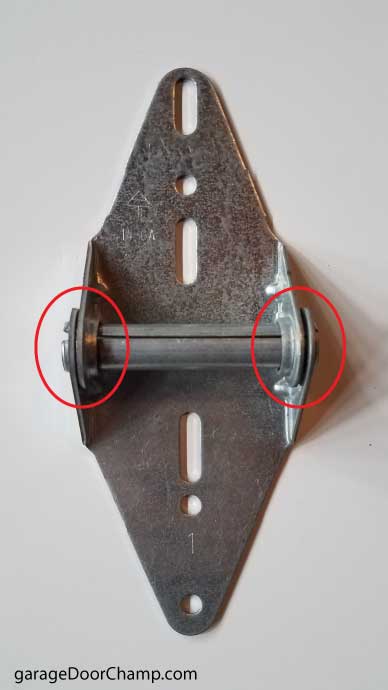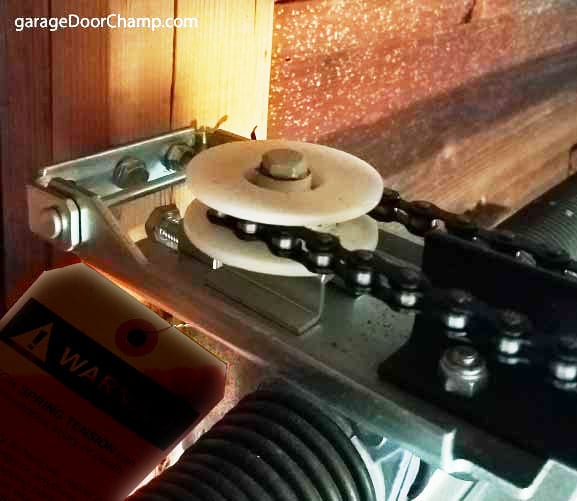Lubricating and maintaining your garage door offers several benefits, including eliminating excessive noise, squeaking, and binding, minimizing breakdowns and repairs, and extending the lifespan of the door. If your garage door is loud, this is where you want to start. The practice is an essential component of regular maintenance that property owners should consider performing every 6 to 12 months, depending on the frequency of usage.
Table of Contents
- Best Practices for Garage Door Lube & Tune
- Lubricating the Hinges and Pivot Points
- Lubricating the Rollers
- Lubricating the Bearings
- Lubricating the Electric Garage Door Opener
- Lubricating Other Parts of the Garage Door
- Should You Lubricate the Garage Door Springs?
- Tightening Screws, Bolts and Nuts
- What Is the Best Garage Door Lubricant?
- What to Do if Your Garage Door is Still Noisy and Squeaking?
Best Practices for Garage Door Lube & Tune
To ensure the optimal performance of your garage door, it’s essential to properly tune and lubricate all its moving parts. This includes hinges and pivot points, rollers, end and center bearings, as well as the opener’s rail, pulley, and sprocket.
Before you start, it’s recommended to remove any dirt, debris, and spiderwebs that have accumulated on the garage door over time. You can use an air compressor for this task, a soft brush, or a dry washcloth. If you have an electric garage door, consider disengaging it from its opener using the emergency release function. This allows you to operate the door manually, making it easier to access all the pivots, hinges, and connections.
Additionally, remove any vehicles parked inside the garage before you begin lubricating the garage door. This step provides you with more space to maneuver and reduces the chances of dripping excess lubricant onto them, potentially damaging their paint or finish.
Use any type of dry lubricant spray. In the process, use a dry washcloth to clean up any spilled grease or lubricant on your garage floor. This not only prevents slipping hazards but also avoids stubborn stains. You can use carburetor cleaner to remove persistent oil or grease stains on a concrete garage floor. To remove stains and excess oil that has spilled over the garage door or onto an epoxy floor, use a washcloth and soapy water.
Note that lubricating areas that shouldn’t be lubricated can create sticky surfaces that attract dirt and debris, potentially causing operational issues. Some parts of the door rely on friction, and lubricating may compromise their ability to function correctly.
Parts of the door that should not be lubricated include tracks, cable drums and cables, torsion tubes, belts, and springs (unless the springs are making popping noises or starting to rust). With that said, here’s an in-depth review of properly lubricating and maintaining your garage door.
Lubricating the Hinges and Pivot Points
Your garage door has hinges that connect its sections. These hinges pivot and fold as you open or close the door.

Apply lubricant to the pivot points on all of the door’s hinges. Spray the lubricant on the sides of the hinge’s shaft, where the ‘rotating’ motion occurs.
Lubricating the Rollers
The rollers are located inside the hinge’s shaft, with the roller’s wheel running inside the track. Sometimes, these rollers will be sealed, and their bearings will not be visible. In such cases, there’s no need to lubricate them. However, if your rollers are not sealed and have exposed bearings inside the roller’s wheel, lubricate the rollers as well.
Lubricating the Bearings
The end bearings rest on the end plates, located at the top corners of the door’s torsion assembly. These bearings support the tube that the torsion springs are mounted on. Lubricate the end bearings from both sides. There’s no need to lubricate the pulleys (or lift cable drums). The center bearing is situated inside the spring’s stationary cone and can be challenging to access, but it should be lubricated as well. You can use a straw to gain better access to both end and center bearings.
Lubricating the Electric Garage Door Opener
Ceiling-mounted garage door openers consist of a rail assembly and a trolley. The rail extends from the opener’s motor head and attaches to the garage’s header. You can spray the bottom of this rail where the trolley slides. To avoid creating a greasy mess on your garage floor, it’s best not to over-lubricate it. You can use a rag to remove excess oil if needed. The openers use sprockets and pulleys at the beginning and end of the rail that should be lubricated as well.

You normally don’t need to lubricate the opener’s chain, as modern chain drive garage door openers should have a factory-fitted coating on them, making them highly resistant. However, if the chain becomes rusted, you may want to lubricate it. Note that for openers with a belt assembly, the belt shouldn’t be lubricated. Wall mount (jackshaft) garage door openers shouldn’t be lubricated either.
Lubricating Other Parts of the Garage Door
Depending on the door’s design and garage setting, there may be other moving parts that need to be lubricated. For example, a rear torsion assembly uses additional pulleys for the door cables that can be lubricated. If there are any moving parts on your door that we haven’t mentioned here, it’s always best to check with a licensed garage door company before lubricating them.
Should You Lubricate the Garage Door Springs?
Normally, there’s no need to lubricate the springs unless they make popping noises or start to accumulate rust. If that’s the case, you can apply lubricant across the top of all the torsion springs in a long, straight line. This allows it to seep into the spring’s coil. It may be worth applying two coats to fully lubricate the springs. Open and close your garage door a couple of times to ensure the oil spreads evenly. Remember to lubricate the spring’s coil only and not the cones.
Tightening Screws, Bolts and Nuts
The garage door is a large and heavy moving object, and its screws, nuts, and bolts can come loose over time. Make sure to tighten the screws for the following items:
- Hinges.
- Jamb brackets (the bracket that secure that tracks).
- Flag brackets (the bracket that connects the vertical track with the horizontal track).
- Door opener bracket or opener reinforcement bracket.
- Any punched angle or fixture that secures the door and opener in place.
Most garage door manufacturers use 5/16” screws to secure the hinges and fixtures in place, so you’ll need a 5/16” wrench. To be more efficient, you can use an impact wrench with a 5/16” socket.
What Is the Best Garage Door Lubricant?
The best type of lubricant for garage doors is a dry lubricant spray. Most lubricant sprays are similar across brands, with the main difference being the design of the nozzle. Consider using a product specifically designed for this purpose, featuring a nozzle that can reach difficult-to-access areas.
For the most part, you may want to avoid rust dissolvers and penetrating lubricants. These products contain solvents and acids and have low oil content, as they are designed primarily to free rusted mechanical parts.
Although wet lubricants such as white lithium, silicone, chain lubes, sewing machine oil, or grease last longer, they attract dirt and buildup over time, creating messy surfaces that are hard to clean and stains that are hard to get rid of. On the other hand, dry lubricants tend to evaporate but still leave a thin layer of lubricant on the surface.
What to Do if Your Garage Door is Still Noisy and Squeaking?
Following these instructions should stop your garage door from squeaking. However, if you have an AC motor, most of the noise is likely coming from the garage door opener.
The opener’s noise and vibrations are part of its normal operation since AC motors use brushes and a commutator. To eliminate the opener’s noise, consider replacing it with a quiet garage door opener, such as a brushless DC opener.
If your garage door rollers are not of the ball bearing kind, replacing them with nylon ball bearing rollers will make your garage door operate more quietly and smoothly.
Note that a noisy garage door could be a sign that some parts are already worn out, such as springs, rollers, hinges, end plates, and bearings. Irregular noise may also indicate that the garage door is not properly balanced, the tracks may be out of alignment, or the torsion assembly is misaligned. Consider consulting a licensed garage door repair company if needed.








Thanks for mention that part about the miscellaneous pieces. I checked the hinges and the wheel that the chain goes around, but I think it just might be something else. At the very least, that darn squeaking still goes on after I have lubricated everything. Thanks for the tips. It did help! I never realized how dirty some parts were in my garage door opener!
Reading this article has shown me just how many different working parts there are with garage doors. This doesn’t sound like something a regular homeowner like me would be able to fix all by myself since I might lack the tools.
One side cable spool sqeals when door is about two panels from being totally open. Its a new door, no binding anywhere. Lubed, lubed, lubed…?????
Hello Trevor, the noise could be coming from the pulley grinding against the end bearing plate, misaligned end bearing plate, or worn bearing.